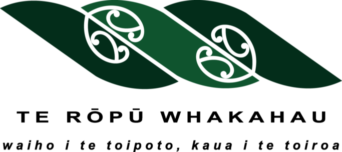Cellia Joe-Olsen, Te Rōpū Whakahau Tumuaki, writes about the whakapapa of the Whiria te Tāngata programme and the driving force behind it.
Te Reo Māori speakers love a good metaphor. You don’t need much beside a vivid imagination and some added flair to come up with a good one. An awesome translation for Whiria te taura here tāngata I’ve seen is ‘weave the strands of humanity together’. This metaphor emphasises the importance of unity, collaboration and the interconnectedness amongst people.
Whiria te Tāngata kia toitū te mātauranga, of course, is about weaving together our collective strengths, knowledge and experiences, in order to create a stronger, more sustainable and resilient library community. Obviously, there is the more official and succinct definition, which can be found on the National Library website. but that’s a tad official if you know what I mean.
All of the workstreams of Whiria te Tāngata have a mātauranga Māori perspective. The metaphor used in these four kaupapa utilise tukutuku panel designs, or reed latticework.
Each design is a visual representation of certain desirable aspects of te ao Māori.
The Waharua or Whenua pattern symbolises commitment and courage and underpins the Whiria te Tāngata kaupapa and represents the mātauranga Māori workstream. Poutama, a familiar tukutuku pattern, represents the process of scaffolding knowledge and acknowledges continuous learning. Purapura whetū represents the numerous stars in the sky, like people on the ground and like the complexity of issues in the sector. This simple cross stitch underpins the data, research and evidence workstream. Niho taniwha, or the taniwhas teeth symbolises strength and unity, it also represents the realm of mythology. Through this tauira or pattern, we are encouraged to honour and respect the dignity of all individuals, recognising that our shared values and actions contribute to a better future for all.

As I reflect on this kaupapa, I can’t help but imagine a tukutuku panel, and my thoughts turn towards how a tukutuku panel is made.
A tukutuku panel consists of vertical and horizontal stakes, kākaho are the vertical, and kaho are horizontal. Participants were likened to kākaho, and in my metaphor fuelled imagination, the TTM team as the kaho. Why? Because the TTM team touched each kākaho. Both the vertical and horizontal stakes are held together by a binding stitch that I know as the Tūmatakahuki. It is the foundational binding stitch of a tukutuku panel, that binds the kākaho and the kaho – the mātauranga Māori – the stitch that binds the kākaho and the kaho.
I could also use the tukutuku metaphor to illustrate the relationship between TTM and Te Rōpū Whakahau. The word tukutuku describes the motion of passing fibres to and through. Ka tuku atu, ka tuku mai. When a tukutuku is being created, you have someone on the front and someone on the back. Each person has a role to do, and the other trusts that the cord being passed back is in the correct place to complete the agreed pattern. The fibres are passed through the kaho and the kākaho to create the pattern. Each weaver trusts their partner is doing their assigned role and following the correct tauira or pattern, that the knots are firm and tidy, and the stitching techniques are secure and balanced.
There is another important part of tukutuku, that is sometimes overlooked, the stand. Tukutuku panels don’t stand on their own. The stand needs to be secure and free standing. The size must also accommodate the dimension of the tukutuku. In the image, you can see the stands, with solid looking planks of timber. These hold the whole shebang up. Our lumber in this day and age, is funding. We thank the New Zealand Libraries Partnership Programme for the funding, led and supported by the National Library. Nei rā te mihi.
Finally, I look at the tukutuku panel that we have created, whiria te tāngata, and know that the tauira can be found in the hearts and minds of our kākaho.






Leave a Reply